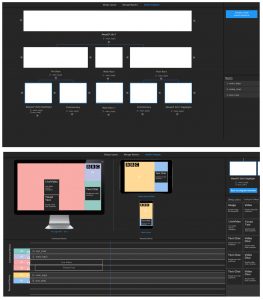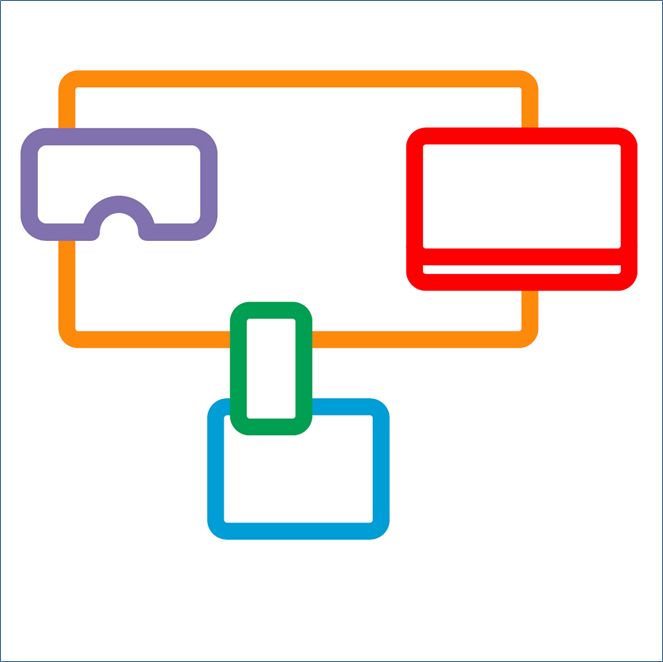Fine-tuning the live production tools
JI LIE of the Distributed and Interactive Systems (DIS) group at CWI Amsterdam writes about the project’s recent encounters with broadcast professionals.
2-IMMERSE is developing a production platform for creating multiscreen and immersive experiences by TV professionals. The production platform includes three software components:
- A preproduction tool that aims at digitalizing the authoring process in an object-based manner. It is a graphical tool to help producers scripting by temporally arranging different media objects (such as video clips, graphics, audio, and subtitles) for both TV screens and companions.
- A live editing tool that enables the production team to react to live events happening during a television program, such as a goal during a football match and an overtake during a MotoGP race. When live events happen, the editorial team can quickly, according to the director’s instructions, edit associated media (graphics, name tags, replay clips) based on prepared templates.
- A live triggering tool that includes a button-based graphical interface and a keyboard launcher. The edited templates are enqueued as a thumbnail on the interface of the launcher, which can then by easily triggered by the director.
The live editing and triggering tools have been successfully evaluated at the Wembley Stadium during the FA Cup semi-final and final and showcased at the International Broadcasting Convention (IBC) 2018 in Amsterdam. The team is now busy further developing the preproduction tool.

Fig. 1. A demo of the live editing tool and the live triggering tool at IBC2018
The initial wireframes of the preproduction tool were designed and iterated based on the inputs of two rounds of interviews with a total of 20 professionals in the broadcasting industry (see papers: “Designing an Object-based Preproduction Tool for Multiscreen TV Viewing” and “A New Production Platform for Authoring Object-based Multiscreen TV Viewing Experiences”). In September of 2018, a number of extra interviews to fine-tune the interface and interaction design of the tool have taken place.

The interviews were conducted with seven professionals (P1-P7; 5 males, 2 females; M=35.0, SD=6.0), whose backgrounds are summarized in Table 1. The interviews happened from 3 – 5 September 2018 at the usability lab of BBC R&D, located in the MediaCity, Manchester.

Fig. 2 (Top). The hierarchical organization of the program chapters; (Bottom) The spacial and temporal arrangements of the DMApp components.
The interviewees confirmed the basic design decisions for the preproduction tool: hierarchical organization of the program sections and sequential arrangements of the media objects following the script (see Fig. 2). The former offers a clear structure and enables the use of a master layout to reduce repetitive production work. The media objects can be configured and reused to have interactive and novel functions on TV programs. These can, for example, enable users to select different view angles or to follow their favourite football players.
In addition, the professionals recommended a node structure to link media objects within a section, to have a clear overview of objects that are running in parallel and those running in sequence. Regarding the layout of the TV program, the professionals confirmed the intuition of the research team that the preproduction tool does not require to manage it.
Based on the feedback, the original interaction design of the tool will be improved, a new development process will take place, and a final evaluation with the seven professionals will happen by the end of November. The idea is to ask the professionals to create a multiscreen and interactive TV sports program. Stay tuned!


